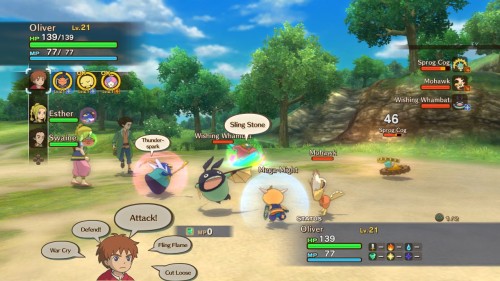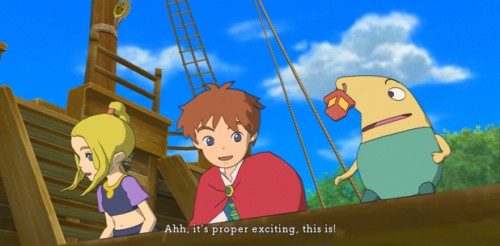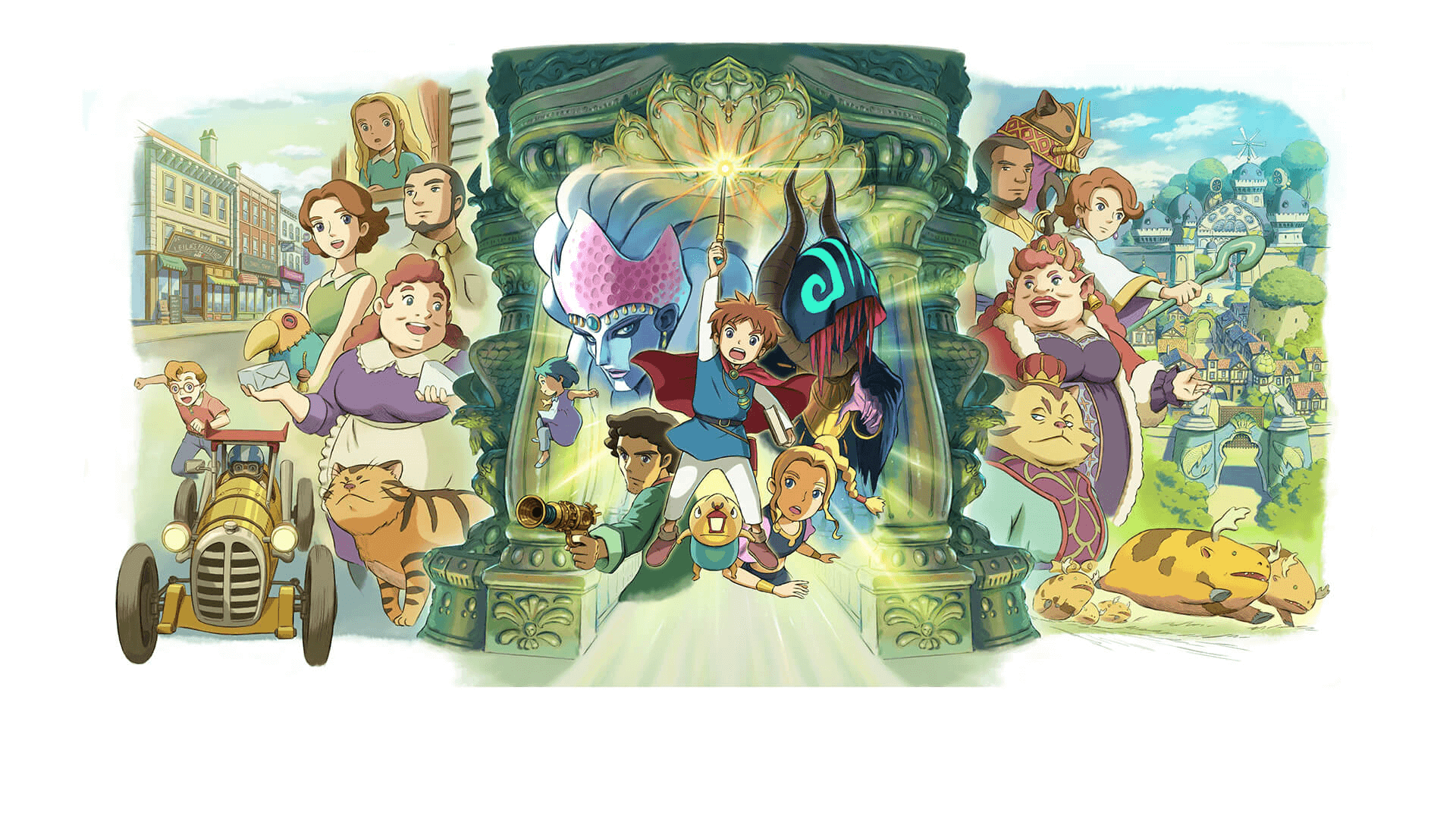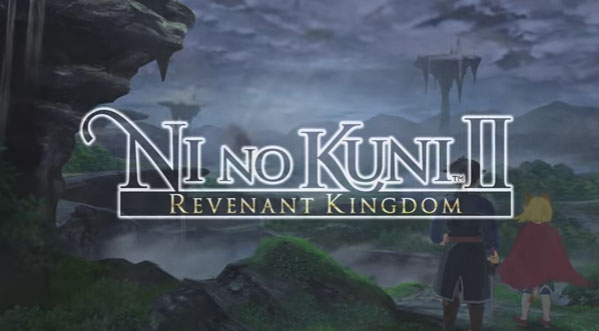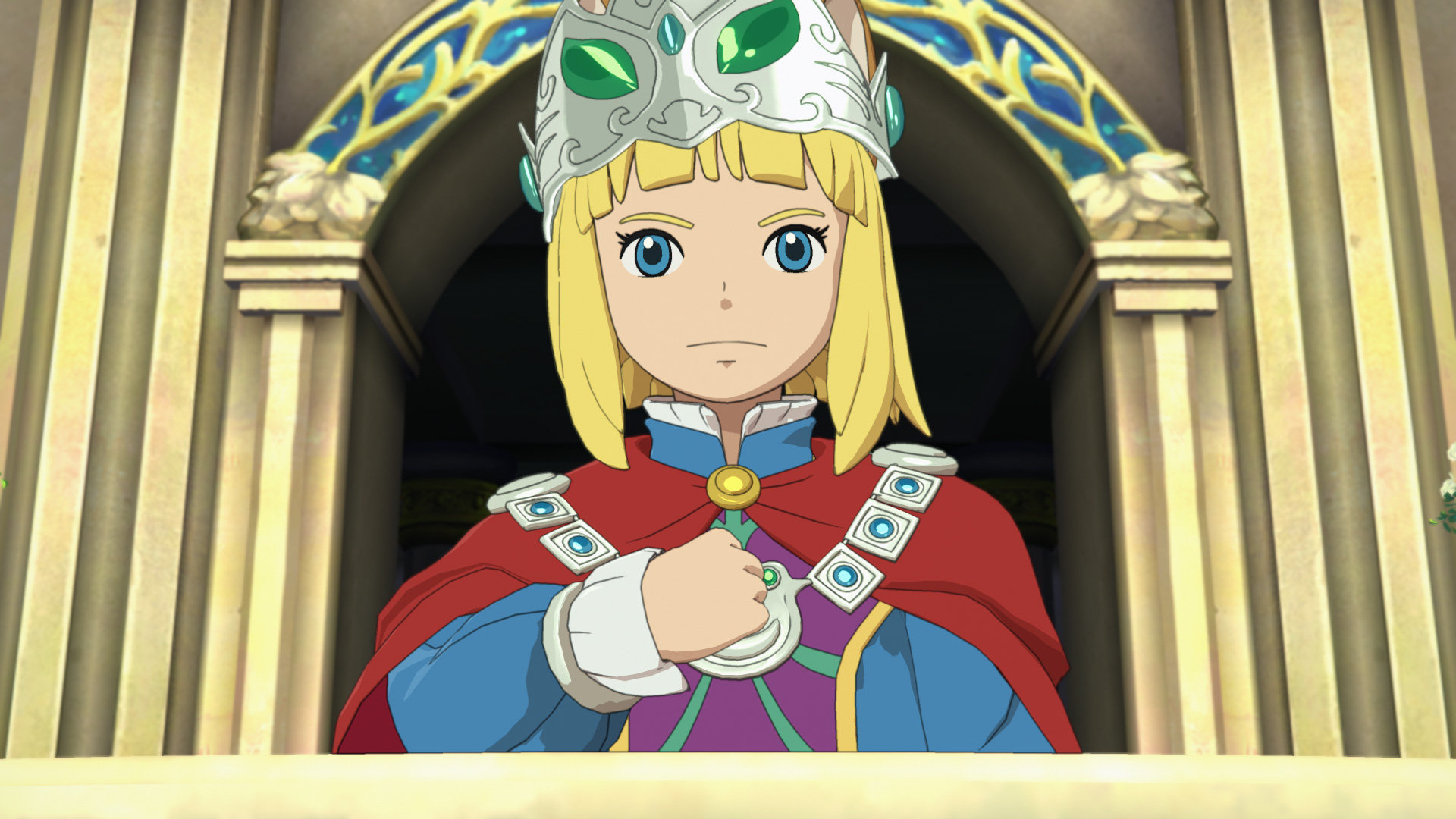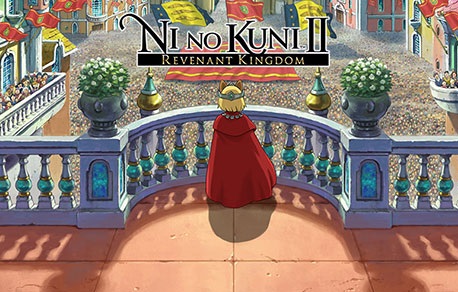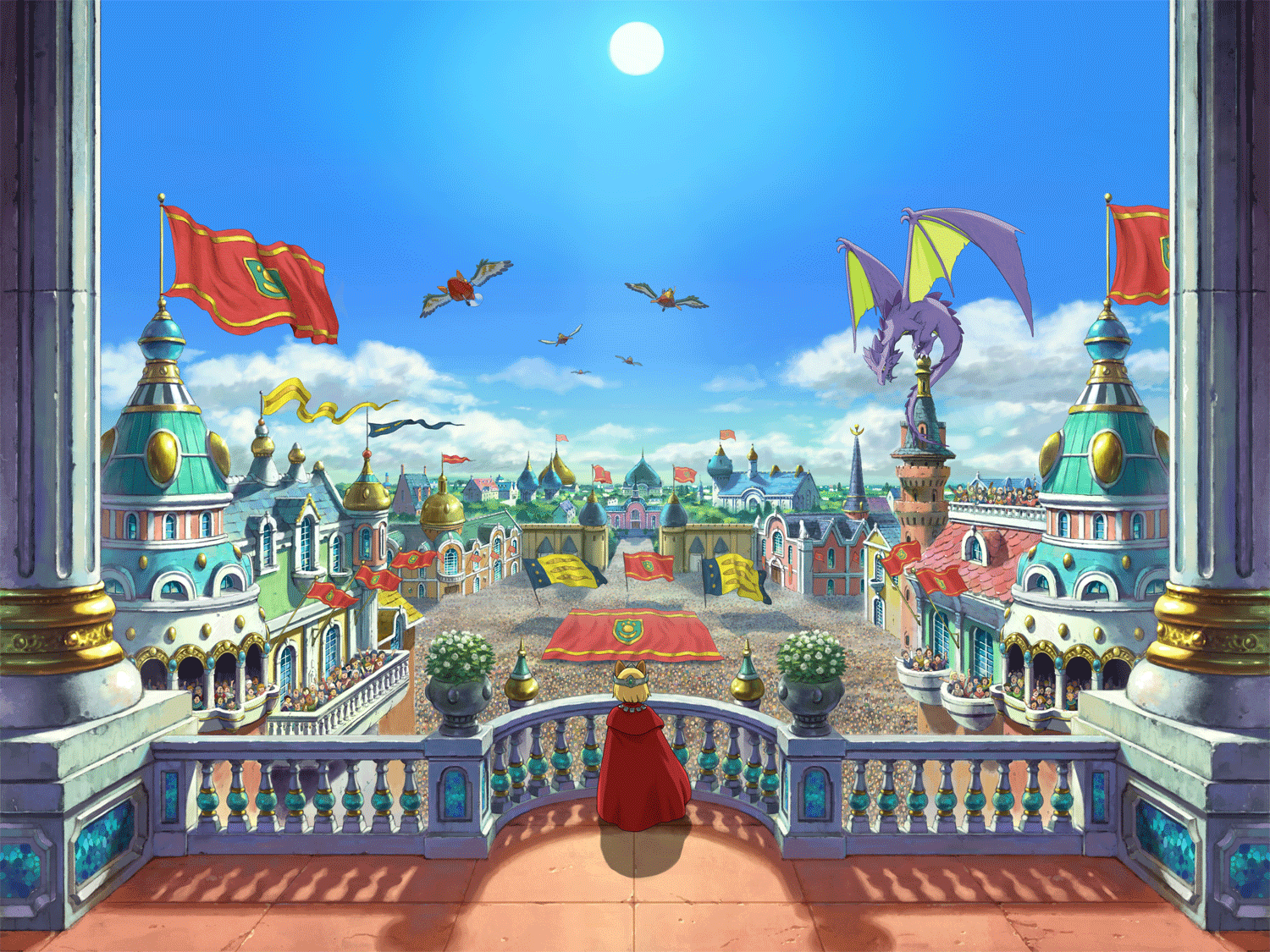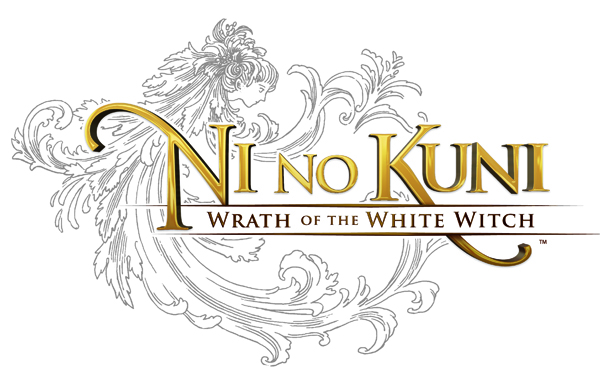
Level 5 have made quite a name for themselves in the games industry. They’ve been known as an RPG powerhouse for years now, but they’ve also developed other games like the highly successful Professor Layton series. This year’s Ni No Kuni: Wrath of the White Witch marks one of their most interesting RPG projects to date, largely due to their collaboration with the well known anime studio, Studio Ghibli. They’ve produced a large number of highly successful anime films (with Spirited Away being their biggest), which were popular both in and outside of Japan. Their distinctive, quirky style and creative designs have captured the imagination of many. Ni No Kuni is their second video game project, and their influence is immediately apparent, you only need to glance at the artwork. With Ghibli being involved, the game was always going to be pretty, but is it actually fun to play? Let’s find out.
Ni No Kuni‘s premise is simple enough. Oliver is a regular kid living with his mother in a small town called Motorville. One day, he and his friend Phil decide to test out a hobby car that they’ve been working on, but the test run ends in disaster. The car flies off the road, and Oliver (the driver) ends up in a nearby river. His mother jumps in to save him and succeeds, but the effort aggravates her heart condition, causing her to weaken and die soon after. Oliver is heartbroken, but as his tear drops fall onto his favourite doll, it suddenly springs to life. The doll is actually Drippy, Lord of the Fairies, who was sealed away by an evil sorcerer. Drippy’s got an idea that might bring Oliver’s mum back, which involves defating the sorcerer, but he’ll have to travel to Drippy’s home world in order to attempt it. This colourful world is full of strange, often aggressive creatures, but there’s also cities where Oliver will be able to enlist some help from the natives. The adventure begins. Although the game’s opening is a little dark, the tone quickly shifts, as Oliver finds himself being a part of something much bigger than himself.
Ni No Kuni‘s basic flow is pretty typical JRPG fare. You gain experience points after every battle, level up, take on various side quests, and explore the world with a party of characters. There’s nothing particularly original, as far as the basic mechanics go. You travel across the large overworld in real time, battling creatures, visiting towns, and slowly advancing the story. Unfortunately, the game’s story was not written by Studio Ghibli. For some reason, that duty was left to Level 5, and it just doesn’t come together as well as one would hope. Although it starts out strongly, character development is almost non-existent, and the overall tale ends up being a bit of a shaggy dog story. Although Ni No Kuni‘s world and characters are perfectly charming, even heartwarming at times, you can’t help but feel that not enough was done with the overall concept.
Moving on to the core gameplay, what sets Ni No Kuni apart from most games of its kind is the monster taming element. As Oliver fights the game’s various enemies, he also has the chance to recruit them once they’ve been defeated. Almost every creature can be tamed, and once that has been done, they can be added to your party and levelled up like a regular character. In fact, Oliver himself rarely does any fighting, because tamed creatures (refered to as familiars) are much stronger. As such, Ni No Kuni has often been compared to the Pokemon games, and there really are a lot of similarities. Oliver tames (catches) creatures, trains them, and evolves them, but unlike the Pokemon games, he can also deck them out with various stat boosting equipment. Each creature has its own unique stat growth too, and as they level up, you can see how they will grow in some areas more than others. Are all creatures created equally, though? For the most part, yes. You can expect different familiars trained to the same level to be roughly as strong as each other, but there are few exceptions. It’s an enjoyable, well balanced system on the whole and there’s over 300 familiars in the game (counting evolutions), with all of them available as party members. As such, Ni No Kuni is pretty much the only RPG on the market that can rival the Pokemon series’ huge amount of choice. That’s definitely worthy of praise.
What’s less worthy of praise though, is the battle system. Level 5 have taken a rather unusual approach here, presenting us with what appears to be a fairly standard action-RPG system at first glance, combined with a menu system which wouldn’t look out of place in a turn-based system. Yes, you read that correctly. Surprisingly, this mashup of fast paced, real time battling and selecting commands from a menu works better than one would expect. This is partly due to the overall system’s simplicity. The attack command is highlighted by default at the start of each battle, as well as when Oliver sends a familiar into battle. Selecting it with a single press of the X button will make your chosen familiar approach an enemy and start hitting it, and doing so repeatedly is all you need to do in order to win most regular battles. The catch is that each command has a duration, and that all of them (except the attack one) require a recharge period before they can be used again. That’s where the big issues begin. Defending is the biggest problem, since there’s a recharge time attached to the command, you simply can’t guard consecutively. If you guard an enemy’s attack, then you’ll have to wait a good 5 seconds before you can guard again. This isn’t so bad during fights with regular enemies, since they don’t tend to use special attacks very often, and their regular attacks aren’t really worth blocking most of the time. During boss fights though, it can be a real pain. Some bosses throw out special attacks rapidly, and if you accidentally block too early or get unlucky with the enemy’s attack pattern, then you’re toast. You literally can’t defend yourself, because the defence command is still recharging, and you’re forced to take the full brunt of the attack. That can mean sometimes death, and it’s frustrating. Even if you cancel the defence command right after you select it, you still have to wait to use it again. There’s really no reason why there should be such a recharge time in the first place.
The other persisting issue is related to healing. Oliver takes a while to use healing spells and items (about 5 seconds after choosing one), and if you’re unlucky, he can easily die while the healing animation is still playing. The game basically forces you to heal before you really need to do so, due to the delay before the healing takes effect. This caused me to suffer quite a few deaths early on in the game, and it’s an annoying system to have to adapt to. There’s no reason why healing couldn’t have been instant. The battle system itself just feels awkward, in the end. Level 5 could have made the whole thing a lot more intuitive and user friendly if they would have allowed players to assign attacks and abilities to the controller’s face buttons, and allow them to map one of the shoulder buttons as evade/block. This would have placed it more in line with other action RPGs, while still leaving the option of using the menus for those who prefer it. Instead, we’re forced to play this somewhat unweildy hybrid. The pace of the battles can be quite fast, and it almost feels as though the menu system can’t quite keep up with the action. Adding to the system’s flaws, the party member AI leaves much to be desired. Party members tend to waste their valuable MP fast, and you only have two simple ways to control their behaviour during battle, which you don’t get access to until you’re pretty far into the game. There’s an actual tactics menu available during battle, but it isn’t especially helpful, since the options are very limited. You basically have to force the AI players to stop wasting MP by making them block, or just hope for the best, while making sure to carry a heap of MP recovery items. Party members will stupidly go all out against even the weakest of enemies, wasting huge amounts of MP, which is needed for performing all of their special attacks. They’re also pretty bad at dodging and defending, so you often have to tell them what to do at all times, by quickly pressing the square button to make them block whenever an enemy uses a special attack. Otherwise, they tend to just sit there and take the blow. They’ll walk into enemy attacks repeatedly, but fortunately they do know how to heal themselves quite effectively. They can’t use items though, so once they run out of MP, they’re almost useless and will eventually get themselves killed. There’s no option to enable them to use items, which is rather frustrating.
Graphically, the game is no slouch. Ghibli’s influence is instantly noticeable, and the character, familiar, and environmental designs are all excellent. The game is simply bursting with personality, and there’s some great use of colour, as well as an eye-pleasing cel-shading effect on all the 3D models. Animations are fluid and realistic, with plenty of detail. Ni No Kuni really does look like a Ghibli movie come to life, and it’s a treat for both fans and newcomers alike. There’s very few jaggies, and the game’s frame rate is rock solid. It’s a great effort from a technical stand point. The soundtrack is also a highlight, with a sweeping orchestral score, and a good variety of music to suit every occassion. Through both the good times and the bad, the background music is always there to provide an extra kick. The voice acting is also of a high quality, and the abundant British accents give the game an extra level of charm. On the negative side though, there’s only one battle theme which is used throughout the 35 hour game (not counting the game’s many, many side quests), and it does start to grate by the end of the adventure. Dungeon designs in general are also a little lackluster, looking good, but often being composed of little more than a series of narrow corridors.
Overall, Ni No Kuni is a mixed bag. While the monster taming elements are strong, and definitely enjoyable, the battle system that accompanies them is unfortunately flawed. The game is visually pleasing, and full of personality and charm, but the story that supports it lacks substance. The game’s length is very reasonable, and there’s heaps of side quests to do, as well as a bunch of post-game content. Ni No Kuni comes across as a bit of an experiment in the JRPG genre, one that has plenty of appeal for fans, but will ultimately end up turning away just as many through its bizarre design choices. There’s a good game hidden within, and I did enjoy the overall experience, but you should definitely think twice before you pick up No No Kuni: Wrath of the White Witch.
Looks great | Sounds great | Collecting and raising creatures is fun |
Looks great | Sounds great | Collecting and raising creatures is fun |


